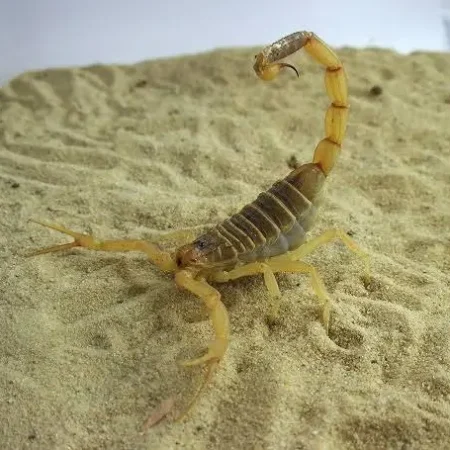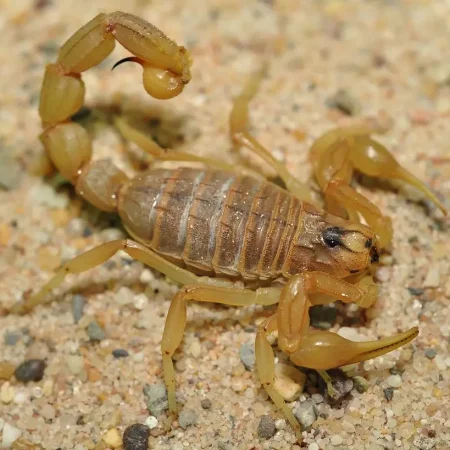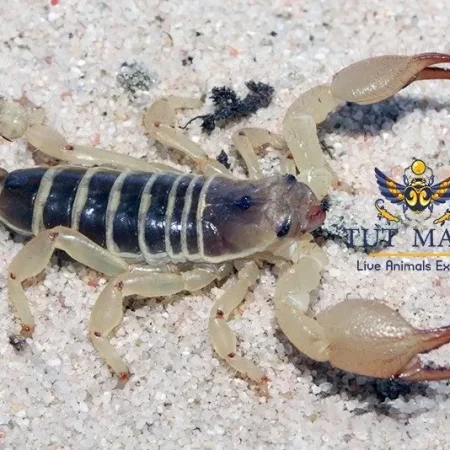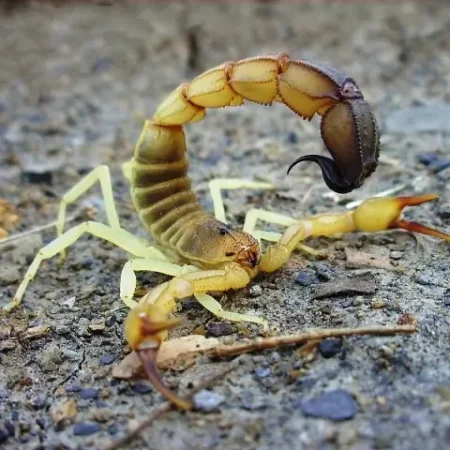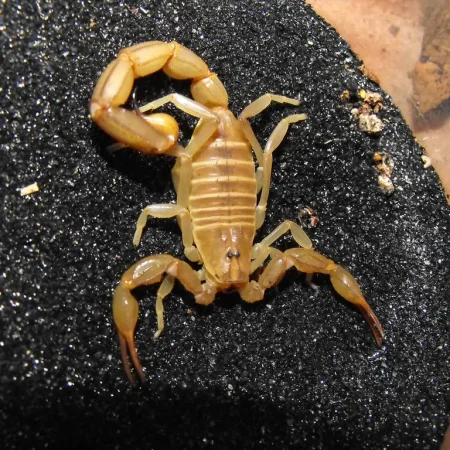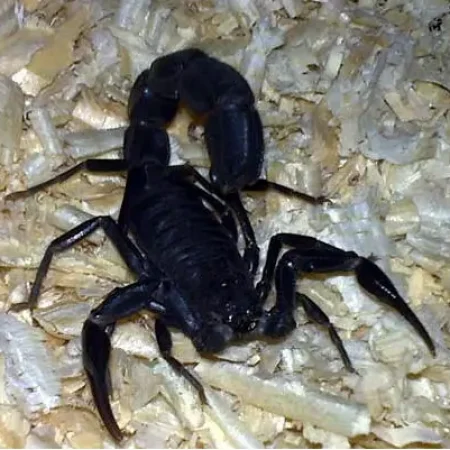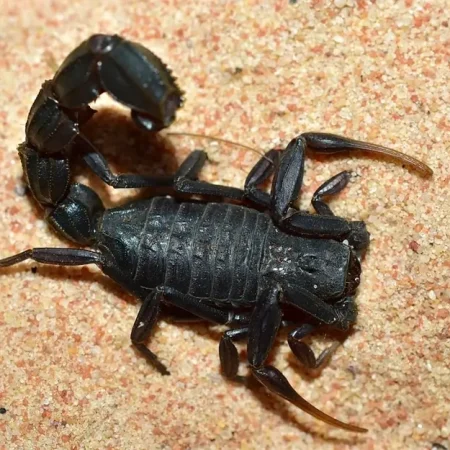Egyptian Scorpions
Scorpions of Egypt – A Comprehensive Guide
Egypt is home to a variety of scorpion species, each with unique characteristics, venom potency, and habitat preferences. At TuT Masr Scorpions, we specialize in the export of high-quality Egyptian scorpions, meeting the needs of researchers, collectors, and venom extraction laboratories worldwide.
In this detailed guide, we explore some of the most well-known Egyptian scorpions, their physical traits, behavior, and natural habitats.
Leiurus quinquestriatus
Deathstalker Scorpion
The Leiurus quinquestriatus, commonly known as the Deathstalker Scorpion, is one of the most venomous scorpions in the world. It has a distinctive yellow body with darker, segmented patterns on its back. Its legs and tail are also yellow, making it well-camouflaged in sandy environments.
Habitat of Leiurus quinquestriatus
This species thrives in deserts and arid regions, particularly in Egypt, North Africa, and the Middle East. It hides under rocks and in burrows during the day and emerges at night to hunt.
Behavior and Venom
The Deathstalker is highly aggressive and possesses a powerful neurotoxic venom that affects the nervous system. While its sting is rarely fatal to healthy adults, it can cause severe pain, convulsions, and even cardiac complications. Due to its potent venom, this species is highly sought after for medical research and antivenom production.
Buthus occitanus
Mediterranean Yellow Scorpion
The Buthus occitanus has a yellowish-brown body with a robust and elongated tail. Its pincers are relatively large compared to other scorpion species, which helps it capture prey efficiently.
Habitat of Buthus occitanus
It is commonly found in semi-arid regions, rocky deserts, and Mediterranean climates, including parts of Egypt, North Africa, and Southern Europe.
Behavior and Venom
This species ” Buthus occitanus ” is known for its defensive behavior and quick movements. Its venom is moderately toxic, causing localized pain and swelling but rarely life-threatening effects.
Scorpio maurus
Large-Clawed Scorpion
The Scorpio maurus is recognizable by its dark brown or black body and exceptionally large pincers, which resemble those of a lobster.
Habitat of Scorpio maurus
This species is a burrowing scorpion, often found in sandy and clay-rich soils in Egypt, the Middle East, and North Africa. It prefers cool, underground shelters.
Behavior and Venom
Unlike more aggressive scorpions, the Scorpio maurus is relatively passive and avoids confrontation. Its venom is mild and primarily used to subdue small insects and prey.
Androctonus australis
Yellow Fat-Tailed Scorpion
The Androctonus australis is a large, thick-tailed scorpion with a pale yellow to light brown coloration. Its powerful tail and venom glands make it one of the deadliest scorpions in the world.
Habitat
This species thrives in hot desert environments, including Egypt, the Middle East, and North Africa. It is highly adaptable and can be found under rocks and in abandoned burrows.
Behavior and Venom
The venom of the Androctonus australis is extremely potent, containing strong neurotoxins that can cause respiratory failure in severe cases. This species is highly sought after for venom extraction and pharmaceutical applications.
Androctonus amoreuxi
Egyptian Fat-Tailed Scorpion
The Androctonus amoreuxi is a medium-sized scorpion with a thick, dark tail and lighter-colored body. It has a menacing appearance due to its robust pincers and large venom gland.
Habitat
This species is commonly found in rocky deserts and arid regions of Egypt, where it hides during the day and emerges at night to hunt.
Behavior and Venom
It is highly defensive and delivers a painful sting. Its venom contains potent neurotoxins, making it dangerous but valuable for scientific research and medical use.
Androctonus crassicauda
Arabian Fat-Tailed Scorpion
The Androctonus crassicauda is one of the largest scorpions in the Androctonus genus. It has a dark brown or black body with a thick tail, which stores a large amount of venom.
Habitat
It inhabits deserts, rocky terrains, and arid regions of Egypt, the Arabian Peninsula, and North Africa.
Behavior and Venom
This scorpion is aggressive and possesses highly toxic venom, capable of causing severe neurological and cardiovascular effects.
Androctonus bicolor
Two-Tone Fat-Tailed Scorpion
The Androctonus bicolor is easily identifiable by its dark black body and reddish-brown legs and tail. It is a medium-sized but highly venomous species.
Habitat
It thrives in hot, dry climates, particularly in Egypt and surrounding desert areas.
Behavior and Venom
Its sting is extremely painful and can be lethal without proper medical treatment. Due to its potent venom, it is highly valuable for biomedical research and antivenom production.
Why Choose Tut Masr Scorpions?
At Tut Masr Scorpions, we are trusted exporters of premium Egyptian scorpions, supplying researchers, laboratories, and collectors worldwide.
✅ Ethical and sustainable collection practices
✅ Wide variety of species for venom research
✅ Reliable export services with global shipping

